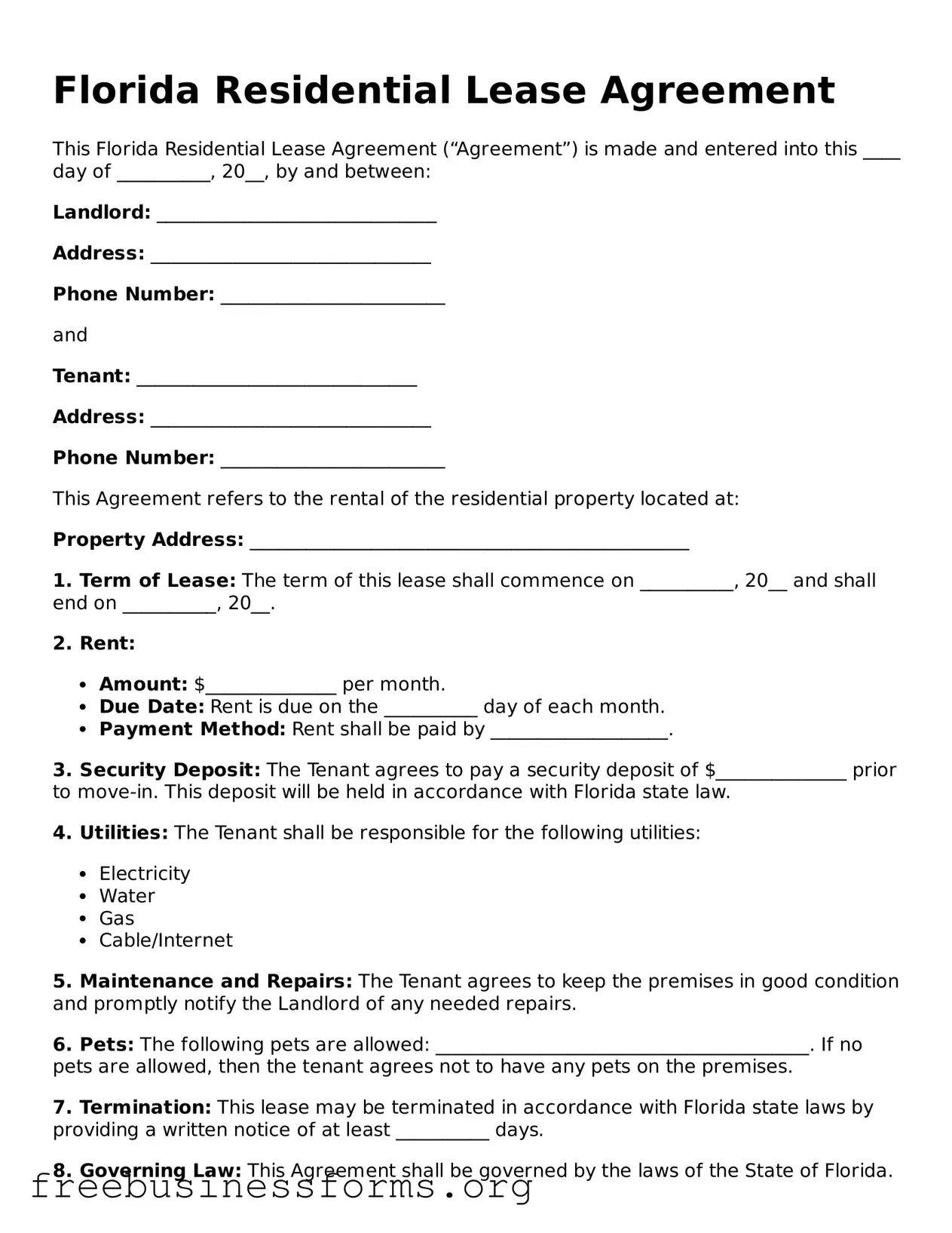Florida Residential Lease Agreement
This Florida Residential Lease Agreement (“Agreement”) is made and entered into this ____ day of __________, 20__, by and between:
Landlord: ______________________________
Address: ______________________________
Phone Number: ________________________
and
Tenant: ______________________________
Address: ______________________________
Phone Number: ________________________
This Agreement refers to the rental of the residential property located at:
Property Address: _______________________________________________
1. Term of Lease: The term of this lease shall commence on __________, 20__ and shall end on __________, 20__.
2. Rent:
- Amount: $______________ per month.
- Due Date: Rent is due on the __________ day of each month.
- Payment Method: Rent shall be paid by ___________________.
3. Security Deposit: The Tenant agrees to pay a security deposit of $______________ prior to move-in. This deposit will be held in accordance with Florida state law.
4. Utilities: The Tenant shall be responsible for the following utilities:
- Electricity
- Water
- Gas
- Cable/Internet
5. Maintenance and Repairs: The Tenant agrees to keep the premises in good condition and promptly notify the Landlord of any needed repairs.
6. Pets: The following pets are allowed: ________________________________________. If no pets are allowed, then the tenant agrees not to have any pets on the premises.
7. Termination: This lease may be terminated in accordance with Florida state laws by providing a written notice of at least __________ days.
8. Governing Law: This Agreement shall be governed by the laws of the State of Florida.
9. Signatures: By signing below, both parties agree to the terms of this Agreement.
Landlord Signature: ___________________________ Date: ____________
Tenant Signature: ____________________________ Date: ____________
